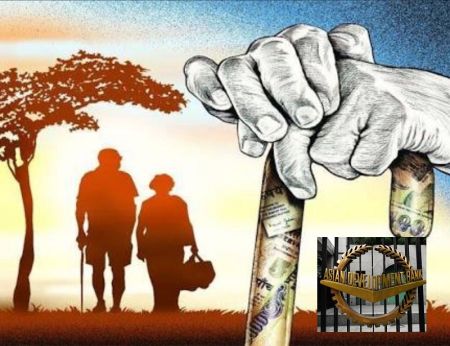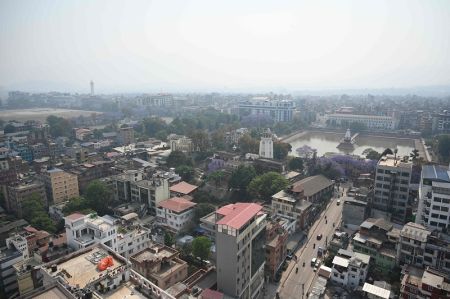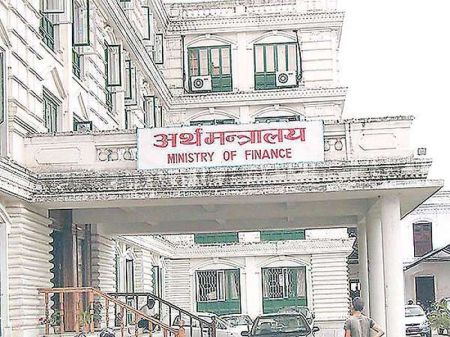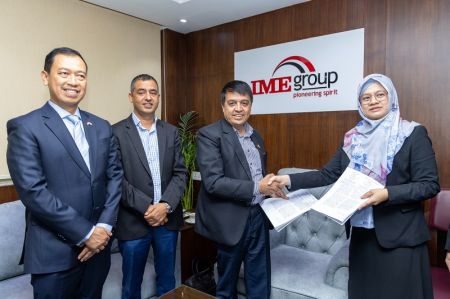--By Prof Ujjwal K Chowdhury
China’s South Asian Exposition in June 2013
As Communist Party of China (CPC) Politbureau member & Vice Premier Ma Kai on June 5, while inaugurating South Asia Exposition in Yunnan of China, announced the start of a new chapter in China’s economic engagement with South Asia, he held aloft the arm of Sri Lankan Prime Minister D.M. Jayaratne, flanked by leaders from Nepal, Bangladesh, Pakistan and the Maldives. Conspicuous by their absence was any representative from India, which has looked on with some ambivalence as its neighbours have appeared to eagerly lend their support to an expanded Chinese economic presence in the region. China’s first-ever South Asia Exposition is an attempt to deepen China’s economic ties in the region. The expo is an upgraded version of a commodities-fair that Kunming hosts every year, signaling the Central government’s backing to an event it had earlier largely ignored.
While Yunnan officials say they believed Beijing had earlier moved slowly due to Indian sensitivities, this no longer appears to be the case. China was obviously moving beyond the earlier situation of its attempts to engage with South Asia economically trailing behind other border-driven efforts. China would follow up the event by taking forward plans to increase regional connectivity. Premier Li Keqiang’s proposals, made during his recent visits to India and Pakistan, to accelerate long-discussed plans to build a Bangladesh- China-India-Myanmar (BCIM) economic corridor and a Xinjiang-Pakistan corridor underscored this intent.
Joint Secretary in the Indian Ministry of Commerce Asit Tripathi was the sole official representative at the event, although 100 Indian exhibitors — many of whom were earlier participants in the annual commodities fair — were present. India’s neighbours appeared more enthused about the event. Jayaratne said the government under Mahinda Rajapaksa backed a greater Chinese economic presence in the region, while Nepal Vice-President Parmanand Jha detailed plans to build a special economic zone along the border with China and courted Chinese investment in hydropower projects. Gowher Rizvi, an adviser to the Prime Minister of Bangladesh, voiced his government’s support for road and rail links between Kunming, Yangon in Myanmar and the strategically significant port at Chittagong. Perhaps the biggest endorsement came from the Maldives. Ahmed Saleem, current Secretary-General of the South Asian Association for Regional Cooperation (SAARC), announced at the opening ceremony that a special session of the standing committee of SAARC foreign secretaries would be held later this year to debate on expanding the role of observer countries such as China.
Experts say that the trade between China and South Asia is seriously imbalanced, and Chinese investment toward the region is not that large yet. Therefore, the China- South Asia Expo can be a good platform to explore the complementary advantages of both economies, in order to reach a balanced trade relationship in the future. For example, India has great interest in developing infrastructure, while China is good at those projects. Bangladesh has relatively cheap labour for manufacturing industries, while China is upgrading its industrial chain and looking to outsourcing more low-end manufacturing business. India has advanced service industries. China can import more services from India, such as software development and its banking system.
Chinese Premier’s Visit to India in May 2013

China is keen to improve its relations with India at the moment for a couple of reasons. First, Beijing does not want to see India align itself more closely with the United States and China’s other Pacific rivals like Japan. And India represents a major new market for Chinese infrastructure companies.
China’s new Premier Li Keqiang arrived in India in May third week for his first foreign trip as the two Asian countries look to speed up efforts to settle a decades-old border dispute and strengthen economic ties. China said on June 9 that Li’s choice of India for his first trip abroad since taking office in March shows the importance the country attaches to improving relations with its western neighbour. After India, Li’s foreign tour had taken him to Pakistan, Switzerland and Germany.
The chief thrust during Li’s visit was on building greater trust between the two countries, which together have more than one-third of the world’s population. The economies of both are in relatively good shape in comparison with those of the West. In his speeches, Li emphasised that the two economies could together be the engine for global growth. He led a huge delegation, representing big Chinese companies such as Huawei and ZTE. Bilateral trade stood at $66 billion in 2012. Both sides aim to raise it to $100 billion by 2015. China is already India’s largest trading partner.
In the context of Sino-Indian relations, shorn of all verbiage, there are three issues that are vital and form the core of concerns for India. These are: (A) The boundary issue; and (b) Trade and commercial relations and (c) Strategic issues such as Sino-Pak relations and the emerging scenario in the Indo-Pacific region.
On the boundary issue there seems to be no further movement at all. The joint statement says that the two PMs ‘encouraged’ the two Special Representatives to ‘push forward the process of negotiation and seek a framework for a fair, reasonable and mutually acceptable settlement in accordance with the agreement on political parameters and guiding principles.’ But what is missing is that there is no commitment by China for a demarcation of the LAC, in order to eliminate incursions of the type that we saw recently at the Depsang plains. All that China was willing to concede was that various border mechanisms be ‘improved.’

There is no doubt that Sino-Indian trade volumes have grown exponentially over the years, but so has the trade imbalance. China has become India’s biggest trading partner, with two-way trade jumping from $5bn in 2002 to nearly $75bn in 2011, although that figure declined to $61.5bn last year because of the global economic slump. The trade deficit from a mere US$1.08 billion in the year 2001-02, has burgeoned alarmingly to US $ 40.77 billion in the year 2012-13.
But what did Li offer? Li offered ‘co-operation’ on pharmaceutical supervision including regulations, stronger ‘links’ between Chinese entrepreneurs and the Indian IT industry and ‘completion’ of photo- sanitary regulations in agro products. Missing was any indication that the Chinese had agreed to open their markets for Indian products. A CEOs Forum was also set up to be headed by Anil Ambani and Chen Yuan, Chairman of the China Development Bank from the Chinese side. It is hoped that the CEOs Forum would be to suggest measures for reducing the overwhelming trade deficit. India simply cannot afford to run up such huge deficits year after year!
Good development is that the two sides talked about the possibility of opening a Bangladesh-China-India-Myanmar economic corridor that would link South Asia with South-East and East Asia. Eight agreements were signed, on cultural relations, bilateral nuclear cooperation, the sharing of water resources, and so on.
Sino-Pak Relations: Worries for India

On the third issue relating to Sino-Pak relations, Li made no public comment while in India. There is no other country in South Asia where the impact of Chinese policies is felt more than in Pakistan. There are two major factors in the Sino- Pakistan relationship that worry India. The first relates to Sino-Pakistan nuclear co-operation and the second to the massive arms supply from China to Pakistan, that encourages the latter to adopt a belligerent posture towards India. As far as the nuclear issue is concerned, China plays a central role in the efforts of Pakistan to increase its nuclear energy output from 770 megawatts to 8000 megawatts by 2030. Present Pakistan production is based on the Chinese supplied two nuclear reactors and a smaller Canadian one. China stands for nuclear equivalence between India and Pakistan. Having ‘fathered’ Pakistan’s nuclear weapons programme, China now intends to ‘grand-father’ Pakistan’s civilian nuclear energy programme. In addition, China is the main weapons and equipment supplier for the Pakistan Army. According to the Swedish think tank SIPRI nearly 55% of China arms exports go to Pakistan. China’s arms exports for the period 2008-12 rose by an unprecedented 162% and it has replaced the UK as the 5th largest exporter of arms in the world. China supplies everything from fighter aircraft to missiles to naval vessels to Pakistan.
As China courts India with visions of an economic partnership that could strengthen Asia’s sway over the world economy, Beijing must be careful not to upset Pakistan, to whom it has always been an “all weather friend” in the two allies’ diplomatic parlance.
Li arrived in Islamabad on the heels of a visit to India, his first trip abroad since becoming Premier in March. Pakistan would also like to increase trade with China. Trade between the two countries exceeded $12 billion for the first time in 2012, and they hope to reach $15 billion within three years, according to a statement by Pakistan’s Foreign Ministry. The two countries have also signed agreements related to energy, technology and space during Keqiang’s visit. China is Pakistan’s largest trade partner in the world and Pakistan is China’s second largest trade partner in South Asia, after India.
Broader Sino-Indian Issues:
Home to more than one-third of humanity, China and India are more than just neighbours; both are rising global powers that are still developing countries and which have become strategic partners on many international issues. Delhi and Beijing find themselves on the same side in global arguments over such questions as climate change, for example, or the reform of the international financial system.
The two sides have also found there is a lot of room to boost their trade, which last year stood at a rather lackluster $66 billion. They have set themselves the target of increasing that to $100 billion by 2015, and of encouraging more cross-border investment. India wants to trade China more pharmaceuticals and information technology. China, meanwhile, has seen India emerge as its biggest market for infrastructure contracts – already worth $35 billion and with $16 billion of deals in the pipeline. With warmer bilateral ties, Beijing hopes, that figure could rise significantly.
However, past history of conflict and competition complicates current geopolitical frictions, as China and India discover they have overlapping interests. India today is increasingly close to Washington, a posture that alarms Beijing, and India is rubbing up against China in the South China Sea, where a state-owned Indian oil company has signed an exploration deal with Vietnam in waters that China claims as hers.
China, meanwhile, has unnerved some Indian strategists with its activities in the Indian Ocean. A Chinese company now operates the Chinese-built port at Gwadar, in Pakistan’s Balochistan Province; the Chinese Navy has refueling rights in the Seychelles, and a Chinese-built port in Hambantota, Sri Lanka, is due to open next month.
However, the expression of confidence on a cooperative paradigm of engagement emerging between India and China in the Indian Ocean by India’s National Security Adviser Shiv Shanker Menon reflects two schools of international relations. On one hand is the school led by Menon and others who operate from a liberal perspective and thus see cooperative engagement with China rather than a contested one. This is evident through the series of dialogues being held with Beijing despite some of the contentious issues remaining unresolved that includes the boundary. On the other end of the spectrum is the realist school that sees India and China relations from a balance of power perspective thus indicating that both countries will be seeking to carve out their own sphere of influence in the region and globally aligning with players who are seen opposed to each other.
China & Nepal:
Though the new Chinese Premier is yet to visit Nepal, his predecessor Premier Wen Jiabao had made a surprise visit to Nepal in late 2012 and announced Beijing would provide the Himalayan nation with $119 million in aid for economic development.
Boosting Chinese investment in infrastructure projects in Nepal is expected to be top of the agenda. The Nepal government has been requesting for a line of credit worth US$ 5 billion for construction of hydropower projects and an international airport in Pokhara. Nepal is seeking Chinese assistance to improve infrastructure and for highway projects. The signing of a Bilateral Investment Promotion and Protection Agreement (BIPAA) is also expected to be discussed.
China’s security concerns over Tibet, which neighbours Nepal, is a major issue in Sino-Nepali relations. Hu Shisheng, a leading South Asia scholar at the China Institutes for Contemporary International Relations (CICIR), told The Hindu in an interview last year that China wanted “to do whatever it can to stabilise Nepal.” “The unstable situation in Nepal provides golden opportunities for those who want to play the Tibet Card to create problems for China in Tibetan regions,” he said.
During the ceremony that celebrates National Day of Nepal which was held in its embassy in Beijing recently, Dr Mahesh Kumar Maskey, Ambassador of Nepal to China said, “The enhanced economic cooperation between two countries will surely open doors of all round development of Nepal.” In the speech, he recalled the enduring friendship between China and Nepal that could be traced back to the 5th century when sages and saints travelled both Nepal and China in the pursuit of peace and wisdom. This year, former Nepalese Prime Minister Prachanda visited China and met withPresident Xi Jinping.
(The author is former Dean of Symbiosis International University and President of the advisory board at Whistling Woods School of Communication, Mumbai.)






















